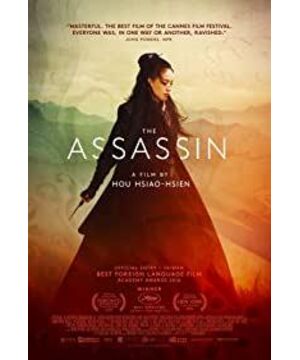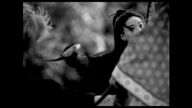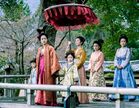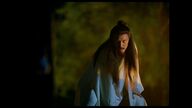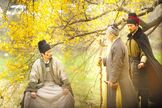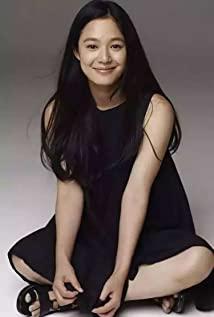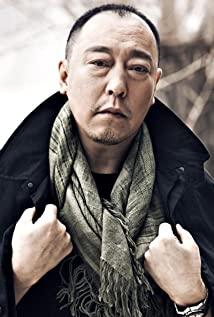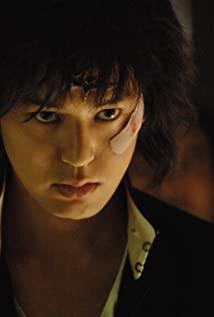Since Cannes, I have written tens of thousands of words for "Nie Yinniang". Among them, most of them are media drafts that are invited by others. For me, who has only seen the movie once, it is really the limit. Therefore, one of them was picked out to respond to the national release of today's film. The fact that Hou Hsiao-hsien's art film was released on the mainland on such a large scale was originally an event. Everyone has their own opinions on whether the movie is good or bad. I just hope that everyone can put aside the ridicule and debate based on "taste" and restore the discussion about light and shadow itself.
This article was first published in the August 2015 issue of "Theatre and Film Review".
Welcome to recommend and forward it. For reprints, please contact Soybean
Oil
. -------------------------------------------------- -------------------------------
Nie Yinniang in the legend of the Tang Dynasty is strange and mysterious, because of her various unpredictable movements, she became a The target of the gossip in the rivers and lakes. Legendaries tell stories, which is somewhat sensational, and every move always carries a sense of competition and ruthlessness. In the hands of Hou Hsiao-hsien, this mysterious chivalrous woman turned into an Asperger who lives in the treetops, observing the opponent in silence, just like in "My Childhood", entrenched in the tree for a long time and unwilling to return. The home's A Xiaogu stared curiously at this unfamiliar world. From any point of view, "Assassin Nie Yinniang" is the masterpiece of director Hou Hsiao-hsien, and it is also an outlier in his creative context: the obsession with rivers and lakes is still there, but the story of the heroine is not easily captured. The dampness and restlessness of youthful hormones in the early years was soaked in by the thorough ancient rhythm. It took eight years to polish it, and "Assassin Nie Yinniang" has thus become a film that is slower than slow. Looking at the Chinese-speaking world, it is rare to see colleagues, which should also prove the director's almost decisive position on the protagonist: one person, no peers.
The fighting with knives and knives in the trailer has both the strength of heavy punches and the lightness of hair brushing. It seems to be a continuation of the "Hidden Dragon and Crouching Tiger". It was not until the screening of the finished film that I realized that I had underestimated Hou Dao's ambition. Originally I thought that the ethereal and dreamy shooting of fighting and killing was the level, but I didn't expect to recall the basic laws of physics and impose many restrictions of gravity on the body. Director Hou's old friend Tang Nuo said it accurately, "He just wants to give up this part of the type agreement with the audience", which unexpectedly redefines the definition of "martial arts". Accustomed to fighting and killing with swords, lights, swords, and shadows, and being in love with each other at every turn, the audience of "Assassin Nie Yinniang" will almost always show a surprised expression. The word "hidden", as the title of the movie, suppresses the emotions that may be poured down all the time. Whether it is a martial arts drama of close-quarters combat or a literary drama of gazing with affection, all of them will shrink their emotions in the chest cavity. . Even the victory or defeat of the two sides is only euphemistically expressed by a slit in the sleeve or a dropped mask.
"Assassin Nie Yinniang" is as deep as an old well. Foreign audiences were bewildered and could only claim to praise the breath-taking picture. Local audiences, if they did not have some background in historical literature, would not be able to withstand this oncoming ninth century landscape. However, the film's critique is not in the plot, but in the outline of the story, it can be summed up in a short description: a cold-faced female killer, driven by compassion, rehabilitated and returned to the field, and has since been hidden in the arena. At that time, the prosperous age of the Tang Dynasty had passed, and the Jiedushi envoys were entrenched and fighting, and the forces grew and grew. Wei Bofan was the most powerful town, but the daughter of the general was taken away by a Taoist nun when she was young. After learning peerless martial arts, he returned home, intending to assassinate the lord Tian Ji'an. Tian Shi is also the elder brother of his childhood sweetheart, and also has a concubine who is pregnant with Liujia. Yin Niang couldn't bear to kill each other, and she also thought about the overall situation of the world, fearing that killing one person would not eliminate the harm, but aggravate the situation of the group of dragons without a leader. After weighing the pros and cons, he finally gave up the shorn dagger he carried with him, and the mirror-grinder who came across the sea with the Japanese country returned to the countryside.
There is a big difference between killing and not killing, and the mission of "Assassin Nie Yinniang" is to transform this seemingly extreme sudden change into a logical gradual change through the creation of images. Director Hou injected the rare "sense of ritual" in Chinese movies into the film, completing this long "softening" process. The sense of ritual in the film is the result of the joint efforts of various elements such as lens, light, editing, performance, and lines. The signature long shot is still his unchanging image signature, just like the openness of "Love in the Wind and Dust", "The Assassin Nie Yinniang" in "the world is small and the world is big", the environment has become another protagonist besides the actor. Hou Dao's lens patiently captures natural emotions, using clouds, wheat fields, forests, rivers, and even the disappearing wind to spread the depth of the lens. Like a slowly unfolding landscape painting, the film expresses love with blank space. Although the description is about the chaotic times in the late Tang Dynasty, there is no panic at all in the camera. The change of tone affects the perception of the characters and the audience at the same time. Black and White Memories As the opening prologue, Nie Yinniang kills for the first and last time in the film, and a quick edit reveals the unease of the old days. Occasionally, the picture instantly changes to Yin Hong Mountain and River, and a blood-stained sadness gradually rises. The craftsman-like Director Hou, with the assistance of the luxurious screenwriter team, carefully researched the details of the daily life of the Tang Dynasty, and had the determination to read "Zizhi Tongjian" for a long time, and finally found a way to express the atmosphere of the times - detailed description. The so-called detailed description is just like "Flowers on the Sea", which restores the delicacy of one object and one object. Hou Dao put a lot of effort into the set. This is something that anyone who has seen the movie can't deny. Some film critics said that the image language itself of "Nie Yinniang" "presents the juxtaposition of two polarities, with splashing ink in the narrative, but fine brushwork in the image". In contrast to emotional opening and closing, it is meticulous in details. Hou Hsiao-hsien paid a huge price for this earnestness: eight years and 440,000 feet of film – the official residence of Jiedushi Tian Ji'an is the most outstanding among them. In the most luxurious places, there are flying eaves painted walls, lights and candles, golden thread jade clothes against the splendor of the building itself, and the high-saturation warm colors are also in harmony with "Flowers on the Sea" in the third book of the Republic of China. The impressive interior lighting in the apartment is exactly the same. Compared with the previous work, the camera also boldly expands the space outwards, and uses the idyllic exterior scene with cool colors to contrast with the hot interior scene. The hot and cold tones secretly arouse the senses of the viewers, and also write footnotes for the transformation of the characters in the play.
Yinniang was injured once, which is definitely the pinnacle of the lighting. In this crucial scene, the cold-faced killer not only revealed his physical disability, but also ushered in a critical moment of heart trembling. The hedging of the two emotions also unfolded silently. Director Hou surprisingly arranged two light sources, orange and blue, in the same scene. The mirror-grinder heals Yin Niang, a warm-colored killer with low eyebrows and pleasing eyes, tender and silent. The camera suddenly turned, and the general leaning against the wall, the father of Yinniang, was also dying of injuries, and the cool light source tried his best to create some kind of unease. All the words of the scene are love words, but at Hou Hsiao-hsien’s place, thousands of words can always be frozen into a calm look, or just a piece of accurate color. In the movie, Yin Niang's only emotional breakdown was when she heard the news of Princess Ka Shing's death. The most affectionate action was to cover her cheek with a handkerchief. It is said that the inspiration for this action came from Zhang Ailing's "Leifeng Pagoda". At the end of the novel, Shen Pipa, the heroine, bid farewell to the old nanny.
Although they keep saying that they want to make a "commercial blockbuster", and even pay tribute to the "enjoyable" "Bourne Bourne", "Assassin Nie Yinniang" is by no means Hollywood-style fast food popcorn. The headstrong Hou Dao knew that it was not easy to recover his 90 million investment, but he still chose a narrative method that rejected people thousands of miles away. The dialogue was reduced to sixteen sentences, and it was compressed to less than ten lines again and again, and it was still all classical Chinese with a low voice. It was true to activate the old sayings, but it was jerky and incomprehensible, which still made the audience feel a little pressure. It seems that Bresson and Ozu are the most talked about, and Hou Dao is still vigilant about "narrativeness" in "Assassin Nie Yinniang". It's not that he doesn't understand the benefits of a compact and conflicting story, but that he deliberately seeks more poetry from the loose fragments of life. The feeling of exhaustion brought about by hand-to-hand combat was diluted by the long wait and dormancy in the movie. After getting rid of the shackles of popular laws, he instead found a more comfortable marching rhythm. The chaotic image style forms the unique characteristics of the film. As Zhu Tianwen, one of the screenwriters, said, Hou Dao's sparseness makes his film "look like it is unfinished at any time". The emotions are all outside the frame, and the charm is also scattered in the gaps between the fragments, waiting for the audience to chew and taste consciously. Whoever said Hou Hsiao-hsien didn't understand narrative, he just used the camera and the picture to speak with gusto, showing a little cringe and arrogance. In order to mobilize all the senses of the audience, Hou Hsiao-hsien did not hesitate to hide the richest flavor of the film outside the painting. A dialogue that cannot be seen by the listener and a door that can only be heard are the main promoters of the plot. The audience, on the other hand, is likely to miss important hints including ambient sounds, and in front of "Nie Yinniang", they are annoyed that they have lost their omniscient perspective.
Sometimes, Hou Dao also "kindly" gives the audience a pair of God's eyes, so that they can easily understand the conspiracy and power tactics inside and outside the dynasty. When a piece of paper kills a person, the camera follows the witchcraft that turns into smoke, from the wizard's room, all the way to Tian Ji'an's palace. It looked real from the outside, but the people in the play killed each other without knowing the truth. The audience couldn't help but sweat at this sensational moment. But more often, Yin Niang affects the change of vision, and the audience hibernates, observes, and waits for an opportunity with her. When she first arrived in Tianfu, Yinniang was watching Tian Ji'an's conversation with her concubine Hu Ji from the roof of the house. The soft gauze curtain moved with the wind, sometimes blocking the sight of the shuttle, and sometimes opening up gaps, and all kinds of things in the house were looming. Hou Dao patiently followed the movements of the wind and recorded the long peep with a camera. The audience also has the perspective of Yinniang, and in just a few back and forth, they will understand the ins and outs of all the grievances.
Although it is a martial arts film, "Assassin Nie Yinniang" emphasizes "Xia" over "Wu", and the only few fights are quick and neat. When dormancy and observation become the necessary steps in martial arts, the recklessness of happy life will eventually give way to thinking about love. Hou Hsiao-hsien, who has been mixed on the road, still has a strong arena complex in his bones. In the early years, the little gangsters under his camera, who didn't agree with one word, smashed the table and smashed the field, as fast as a storm, from outside the camera all the way into the camera. When I arrived at Nie Yinniang's place, there was more traditional indifference, and more sympathy for the family, the country and the world. The film's alternative expression of the righteousness of the rivers and lakes seems to have inherited the compassion and vicissitudes of "Goodbye to the South, the South", but Hou Hsiao-hsien, who is nearly seventy years old, is no longer the stubborn young man in front of the Fengshan City God Temple, and the missing assassin Nie Yinniang is undoubtedly. Let him find the urge to express, who has experienced different worlds.
However, the more charm of "Assassin Nie Yinniang" is still wandering and breathing outside the play.
Because it is like Picasso's creation, from the simple to the complex, and then the rough and the essence, and finally the branches are left, and what is presented by the image is only a very small part of the film's creative context. Hou Hsiao-hsien, who is hiding behind the screen, is also a master at manipulating words. The elite screenwriters around him also retain their famous names. This time, Zhu Tianwen kept her pen in her hands, but her niece Xie Haimeng was like a sketcher. She recorded the hard work and fun of the eight years of filming, as well as the details of the script discussion from a long time ago, in "Xing Yun Ji - —In "Nie Yinniang's Filming Profile". In addition to the finished video, the intertextuality of the notes provides another secret channel for deciphering and understanding Hou Hsiao-hsien.
The birth of "Assassin Nie Yinniang" was not easy. Xie Haimeng compared the process of discussing the film script to "Ossed's wife Nilope knitting clothes for her husband". The coming of the year and the year of abundance often makes people feel the taste of famine in an instant after the joy. Sometimes, it is like building an iceberg behind closed doors, working hard for a long time, but only a small tip is exposed to the sea level. And Tang Nuo also said that the size of the film is beyond imagination, only because "it's about the entire collapsed dynasty rather than the two dark alleys in Kaohsiung City, you have to remember people who are counted in ten thousand (although will not appear in the movie), not the job search and salary of the four young people”. It turns out that the more side Yi slanted out, they were born, rejected and disappeared in the dense discussions in the cafe. No wonder Zhu Tianwen said with emotion, "For me, the most beautiful time of Hou Hsiao-hsien's films is in the discussion stage before shooting." The obsession with the legend of Tang did not prevent Hou Dao from making a drastic adaptation of the original work. The renovated story, after the mutual wrestling of Acheng, Zhu Tianwen, Xie Haimeng and Hou Dao, presents a brand new temperament. When Nie Yinniang finally had her own fixed personality, more exciting details in the script discussion stage were abandoned for various reasons.
What is even more helpless is that the image itself is limited in size. Even if it can bear the weight of history, it is an industrial product after all, and it needs to go through too many secular considerations. Cost, audience, box office, team... all affect the final movie. shape. The mirror-grinding teenager who once felt earth-shattering in Xie Haimeng's shooting notes came from Dongyang with a mixed background, but only a distant figure in the finished film. Hard to find. The young man and Yinniang had a long talk. It is said that the effect of the shooting scene was excellent, but in the end, because of the choice of the scene, this shining memory chapter was temporarily thrown into the abyss of the image and became the part of the huge iceberg hidden under the sea level. The Japanese actor Hu Na Shili's role in the scene even disappeared completely, and he became a complete invisible person. Only the flickering eyes behind the veil on the promotional posters evoked the audience's infatuation imagination. It is said that she will reappear in the Japanese version. As for which part of the plot, it is still unknown. Maybe it is a dance under the elegant music, or it may be a farewell to her husband. The limitations of various objective conditions have brought unexpected openness to the work, and the consideration of different markets has led to the birth of multiple versions, which adds a sense of mystery like a female killer to the film. Director Hou selected clips from the vast ocean of material, scrutinized the combination, arranged and intertwined, and weaved a variety of video brocades. The symbiosis of various edited versions will also make "Nie Yinniang" an interesting video text, such as the source of the stream. Spring water, gurgles.
The long-lost Hou Hsiao-hsien finally took over his "Best Director" award on the stage of the Cannes Awards. For movie fans who have been looking forward to it, although "Assassin Nie Yinniang" failed to win the Palme d'Or as expected, it is somewhat disappointing, but in the one-sided praise, it has become the uncrowned king in the movie hall of Binhai Avenue. This work full of loneliness and poetry, not only opened up the vein of new martial arts movies, but also an admirable anti-commercial protest. Hou Hsiao-hsien, who is deeply involved in the film industry, exudes a craftsman temperament that is neither sullen nor annoyed. Nie Yinniang is waiting, and Hou Hsiao-hsien is also waiting. When it reaches the extreme, it has achieved an aesthetic that only oriental people can fully understand. There is no long sleeves, good dancing, no swords and swords. The legend of Tang under the lens of Hou Dao Hsiao-hsien is ethereal and meaningful. After the occasional short battle, the scenery and objects are unique in the shot. the protagonist. There is no one in the empty mountain, but the sound of people's voices can be heard.
-------------------------------------------------- ----------------------------------------
Deep Focus DeepFocus (WeChat: deep_focus)
" "Deep Focus" (Deep Focus) is a Chinese film fan manual founded in Paris but with members all over the world, providing the latest film information and criticism in Europe and North America. At the same time, we are also in-depth observers of major film festivals and film industries around the world. Whether you are a critic with unique insights, a translator who is proficient in foreign languages, or a public relations expert who promotes and maintains the platform: "Deep Focus" welcomes you to join us and create the best light and shadow text together. We will also wholeheartedly recommend the fruits of your labor to Chinese-language media! For further communication, please leave a message directly on this WeChat public account (deep_focus).
View more about The Assassin reviews


